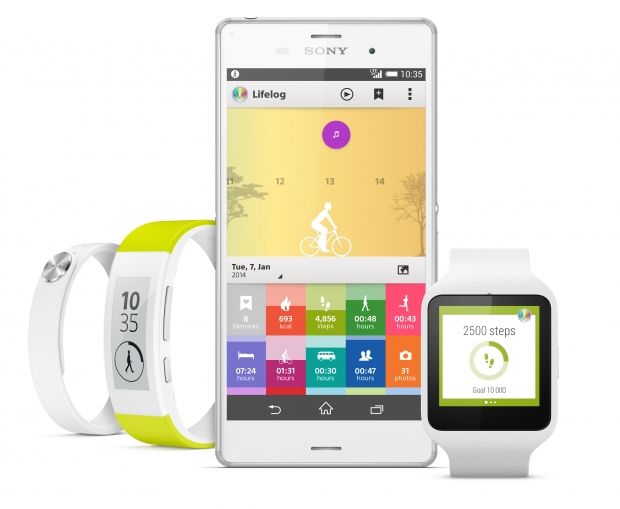 Soon to be available in select territories like Europe and Asia, the Sony SmartWatch 3 is actually the company’s 5th iteration to take on the growing wearable market. Announced at IFA 2014 in Berlin, the SmartWatch 3 is the first device from Sony to incorporate Android Wear, the OS from Google that’s specifically designed for wearables. As a recap, the SmartWatch 3 offers a sporty, rugged design which incorporates a steel-backed case with interchangeable silicone straps that can last for for two days (four days on standby) and charges via micro-USB. On the functionality end, you can get messages from your friends, appointment notifications, and weather updates among other things like flight information, tips based on your interests, or messages from other apps that support Android Wear. There is also a built-in mic with which you can use your voice for search, though, curiously, cannot be used for answering calls.
Soon to be available in select territories like Europe and Asia, the Sony SmartWatch 3 is actually the company’s 5th iteration to take on the growing wearable market. Announced at IFA 2014 in Berlin, the SmartWatch 3 is the first device from Sony to incorporate Android Wear, the OS from Google that’s specifically designed for wearables. As a recap, the SmartWatch 3 offers a sporty, rugged design which incorporates a steel-backed case with interchangeable silicone straps that can last for for two days (four days on standby) and charges via micro-USB. On the functionality end, you can get messages from your friends, appointment notifications, and weather updates among other things like flight information, tips based on your interests, or messages from other apps that support Android Wear. There is also a built-in mic with which you can use your voice for search, though, curiously, cannot be used for answering calls.
Alongside the SmartWatch 3, Sony also announced the SmartBand Talk which features a 1.4-inch e-paper display (like the Pebble). Much like the SmartWatch 3, the SmartBand Talk can track your activities, and displays notifications. As the name suggests, the SmartBand Talk is based around communicating. To that end, Sony incorporated a built-in microphone and speaker which allows for short call functions with HD Voice support. Priced nearly 100 euros under the SmartWatch 3 at 159.99, it makes for a curious choice that this unit offers call functionality while the SmartWatch 3 doesn’t.
Either way, whether Sony had incorporated talk functionality in the higher end model or not does not change the fact that it’s time for Sony to exit the wearable market and specifically smartwatches. Let me explain.
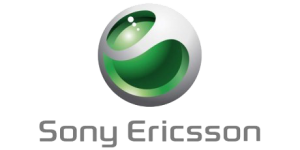 Sony as a company has been struggling this past decade. Never really onboard with the digital era, Sony’s different divisions have suffered greatly as consumer habits have changed. Like most companies, including Samsung, Sony was late to the mobile race and since, has struggled to stay relevant in a mobile world. Just this month, it was revealed that Sony’s mobile division would cost the company $1.7 billion in losses, bringing Sony’s FY 2014 net loss to $2.1 billion. As a reminder, Sony Mobile is part of CEO Kaz Hirai’s One Sony strategy and sits as one of the three pillars that is suppose to reenergize Sony and help return the company to profitability. Clearly things aren’t going as well as they’d planned with Sony most recently confessing that they likely will never be a major player in mobile.
Sony as a company has been struggling this past decade. Never really onboard with the digital era, Sony’s different divisions have suffered greatly as consumer habits have changed. Like most companies, including Samsung, Sony was late to the mobile race and since, has struggled to stay relevant in a mobile world. Just this month, it was revealed that Sony’s mobile division would cost the company $1.7 billion in losses, bringing Sony’s FY 2014 net loss to $2.1 billion. As a reminder, Sony Mobile is part of CEO Kaz Hirai’s One Sony strategy and sits as one of the three pillars that is suppose to reenergize Sony and help return the company to profitability. Clearly things aren’t going as well as they’d planned with Sony most recently confessing that they likely will never be a major player in mobile.
Despite many missteps in mobile which originally comprised of a partnership between Sony and Ericsson (Sony Ericsson would later be dissolved), Sony has been able to create some very solid smartphones and tablets. As the massive loss suggests, a good portfolio of products does not translate into sales and consumer adoption. In contrast, Samsung has enjoyed great success by continuously attempting to copy Apple in every way they can and churning out mediocre clone-like products. Due to an aggressive marketing strategy, Samsung has been able to plaster their name and products on every available billboard, TV spot and magazine ad and it’s clearly paying off for the Korean giant.
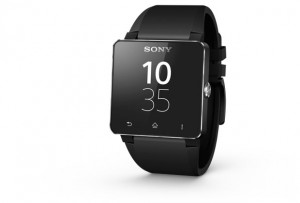
For many companies, wearables is the next extension of mobile which originally comprised of smartphones and tablets. Unlike mobile, wearables range in size and design and generally revolve around health and fitness. Fitbit, Pebble, and Nike are just some of the companies that were first to the wearable market though no company has yet to truly crack it and in doing so, gain mass adoption of their product. As expected, Samsung has released and will continue to release an array of smartwatches in hopes of something gaining traction with the market though they’ve yet to enjoy any meaningful success. It remains to be seen who will truly bring a product to market that will resonate with consumers though all eyes are now on Apple. In early 2015, the company will release Apple Watch, their first step into the wearable market.
And this brings us back to Sony. When Samsung looks to gain market share, they release product after product and throw everything they have at the wall in hopes of something sticking. When Apple comes to the market, they release one very focused device in a massive global rollout. Despite what anyone’s philosophy might be on either company, their successes cannot be ignored. On the other hand, Sony has the most confused strategy of all. Some products are released in some territories while others are excluded and when they do arrive to a given territory, it’s usually 6 months after being announced. Unlike its competitors, Sony has also had the unusual history of being first to many markets though their lack of marketshare clearly shows that being first is meaningless – and Apple will attest to that.
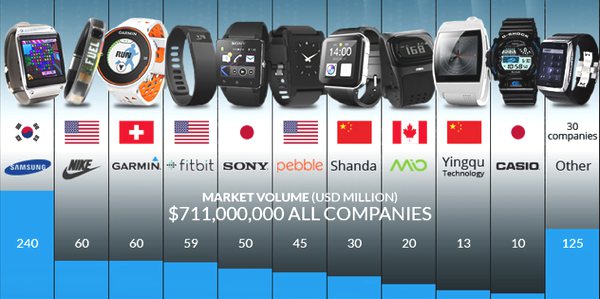
In mid-summer, a new study conducted by DreamChrono revealed that Sony was only able to capture a 7% marketshare in 2013. From the $711 million total market worth in 2013, Sony was only responsible for $50 million with Samsung holding the lion’s share at 34% and this is prior to Samsung releasing their many new iterations of smartwatches. It’s also worth looking at a company like Pebble – which debuted on Kickstart two years ago – and their $45 million stake in the industry to truly realize how small Sony’s reach is to consumer when you factor their global reach and name, unlike Pebble. With an arsenal of new watches from different manufactures and Apple finally getting into the market in the next 6 months, Sony is likely to only see their marketshare further erode. While many would argue that wearables in the next gold rush in tech and that Sony would be crazy to not be a part of it, I believe it’s time for Sony to exit the wearable market and here is why.
The biggest hurdle that Sony faces is Sony. Despite solid products, the company clearly is unable to capture consumer interest and this is a corporate problem. From management and their execution of products to the market strategies or lack there of, Sony clearly doesn’t understand how to communicate their products to the mass market and their declining sales in smartphones shows just that. To put things into context, the Apple iPhone 6 and 6+ sold over 10 million units in limited availability during launch weekend. Sony on the other hand revised their entire mobile division sales which includes the many different phones and tablets the company offers to 43 million for FY 2014, down from the predicted 50 million. Even at 50 million, the numbers pale in comparison to what Apple and Samsung are doing.
As I mentioned, one thing that continues to haunt Sony and their products (and not just mobile) is their inability to market their products. Because of this trend, outside of PlayStation (and you could argue that the PS3 did not have the best of times), the Sony brand has become less and less relevant to consumers and until that changes, Sony cannot hope to make a dent in wearables. If they are unable to deliver their products to the market in a meaningful time frame and advertise their smartphones to consumers, and strike the necessary deals to have them available at retail with varying carrier support, what chance does Sony have at conquering the wearables market which is already hyper competitive thanks to products that carry a lower price point which in turn makes the market more accessible to competition.
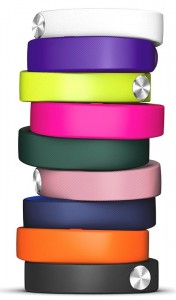
Wearables is still a luxury market, and I don’t mean that in terms of price. Instead, while it’s nice to be able to receive texts on your wrist or to be able to track the calories you burned at the gym, it’s not a necessity. On the other hand, our lives revolve around our smartphone and tablets which help us stay in touch with friends, capture memories, and be productive. If a consumer is going to spend money on a product, first it will be on a mobile, not wearable and Sony is already struggling there. You could make the argument (which is likely the argument Sony made internally when they decided to enter wearables) that they needed to be in the wearable market from the start. Surely if they are there from that market from the beginning, that consumers would gravitate towards their products.
Well, as history as shown, that’s not the case. More so, Sony simply does not have the resources to be competitive in all markets. While once a giant, Sony is now dwarfed when compared to Apple, who can be in every market. As I’m writing this, Apple enjoys a $600 billion market share while Sony sits at $18 billion. Despite all that and at the scale that Apple is able to execute, they still don’t enter too many markets, unlike Sony who is in nearly all markets and a leader in none. Instead, Sony needs to take a step back and reassess their product portfolio to figure out how they can first champion their mobile division and make it a successful part of the company. Only then can and should Sony expand to wearables. That means that Sony should stop making products like the SmartWatch 3, SmartBand Talk, and the SmartBand (pictured left) and any other wearables they have in the pipeline.
Once they’ve done that, Sony should then inject the capital and personal from the shuttered divisions into their mobile arm in order to reinvigorate them. This means doubling or tripling their marketing (I know how absurd that may seem but when you’re barely visible as a company, bold measures are needed) and strengthening partnerships with retailers and carriers to ensure that your products are offered, displayed, and understood. I can guarantee you that if the Xperia Z3 showed up tomorrow at Best Buy or an AT&T store, not a whole lot would change for Sony unless they helped educate and incentivize the work force that’s selling their products and marketed their devices so that consumers would be aware of their existence. Otherwise, it’s just another Android phone and there is no shortage of them.
In short, with a declining brand name and finite resources, Sony cannot stretch itself thin and compete in every market. Instead, they need to focus their limited capital and resources and create a compelling product portfolio that’s championed properly via advertisement and retailers. Once Sony is able to stabilize their bottom line and regain consumer trust should the once Japanese giant think about entering side markets like wearables.
Discuss:
Do you think Sony should leave the smartwatch market?
